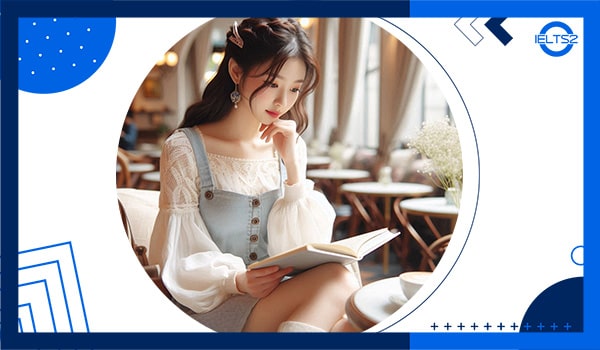رایتینگ آیلتس موضوع تنبیه یک ابزار آموزشی درک درست و نادرست در کودکان
IELTS Essay About children to learn right wrong Punishment is necessary
یک نمونه رایتینگ Task 2 آیلتس در سطح نمره 9 درباره موضوع “تنبیه یک ابزار آموزشی درک تفاوت درست و نادرست در کودکان” از انواع رایتینگ های Agree or Disagree یا مدل موافق یا مخالف را به همراه تحلیل گرامر و واژگان آکادمیک این سمپل خواهیم داشت. همچنین عزیزان میتوانند از تاپیک “تنبیه یک ابزار آموزشی درک تفاوت درست و نادرست در کودکان” بعنوان یک موضوع لکچر جذاب و جدید یا موضوع رایتینگ پیشرفته انگلیسی استفاده نمایند. 500 سمپل از جدیدترین موضوعات رایتینگ آیلتس (سال 1403) با جواب نمره 9 پیشنهاد بعدی ما به شما عزیزان است.
توضیح کوتاه درباره تنبیه یک ابزار آموزشی برای کودکان
بحث آموزش تفاوت بین درست و نادرست به کودکان در سنین پایین یکی از مسائل مهم در حوزه تعلیم و تربیت است. بسیاری بر این باورند که یادگیری این تفاوت در سنین ابتدایی زندگی بسیار حیاتی است زیرا پایهگذار شخصیت و اخلاق کودکان در آینده است. از سوی دیگر، برخی معتقدند که تنبیه میتواند به عنوان یک ابزار آموزشی در این راه مؤثر باشد و کودکان را به درک عواقب اعمالشان نزدیک کند. با این حال، این موضوع بحثبرانگیز است و برخی نگرانیهایی درباره اثرات منفی تنبیه بر روان و اعتمادبهنفس کودکان مطرح میکنند. در این مقاله به بررسی این موضوع میپردازیم و ارزیابی خواهیم کرد که آیا تنبیه برای آموزش اخلاق به کودکان ضروری است یا خیر.
سوال رایتینگ آیلتس تنبیه یک ابزار آموزشی درک تفاوت درست و نادرست در کودکان
It is important for children to learn the difference between right and wrong at an early age. Punishment is necessary to help them learn this distinction.
To what extent do you agree or disagree with this opinion?
نمونه پاسخ نمره 9 برای تاپیک تنبیه یک ابزار آموزشی درک تفاوت درست و نادرست در کودکان
Teaching children the distinction between right and wrong is a crucial aspect of their upbringing. While some argue that punishment is essential for instilling moral values, others believe that alternative methods such as positive reinforcement are more effective. This essay will discuss both views and present my own perspective.
On the one hand, some degree of punishment can be an effective tool for teaching discipline and discouraging inappropriate behavior. When used appropriately, punishment helps children understand the consequences of their actions. For instance, a proportionate response, such as taking away privileges for misconduct, can reinforce the idea that negative actions have negative outcomes. Furthermore, setting clear boundaries supported by reasonable consequences can promote accountability and prevent the repetition of undesirable behavior. However, it is essential that punishment is never excessive or physically harmful, as this can have detrimental psychological effects.
On the other hand, many experts advocate for positive reinforcement as a more constructive approach. Rewarding children for good behavior can motivate them to repeat such actions and fosters a supportive learning environment. For example, praising a child for sharing with others not only reinforces generosity but also encourages them to internalize such values. Moreover, using empathy and dialogue to explain why certain behaviors are unacceptable can help children develop a deeper understanding of morality, which is more sustainable than fear-based compliance.
In my opinion, while punishment may occasionally be necessary, it should be used sparingly and complemented with positive reinforcement and open communication. Children are highly impressionable, and overly punitive methods can lead to resentment or fear, which undermines the goal of teaching morality. A balanced approach that combines clear consequences with encouragement and explanation is the most effective way to help children distinguish right from wrong.
In conclusion, although punishment can play a role in teaching children moral values, it should not be the primary method. Positive reinforcement and empathetic communication are more effective in fostering long-term ethical understanding and emotional well-being.

5 لغت آکادمیک سمپل تنبیه یک ابزار آموزشی درک تفاوت درست و نادرست در کودکان
- Punishment
- معنی: تنبیه
- تلفظ: /ˈpʌnɪʃmənt/
- جمله انگلیسی: Punishment must be fair and proportionate to the misbehavior.
- ترجمه: تنبیه باید منصفانه و متناسب با اشتباه باشد.
- Proportionate
- معنی: متناسب
- تلفظ: /prəˈpɔːʃənɪt/
- جمله انگلیسی: The response to misconduct should always be proportionate to the offense.
- ترجمه: واکنش به اشتباه باید همیشه متناسب با خطا باشد.
- Excessive
- معنی: بیش از حد
- تلفظ: /ɪkˈsɛsɪv/
- جمله انگلیسی: Excessive punishment can harm a child’s emotional development.
- ترجمه: تنبیه بیش از حد میتواند به رشد عاطفی کودک آسیب بزند.
- Impressionable
- معنی: تأثیرپذیر
- تلفظ: /ɪmˈprɛʃənəbl/
- جمله انگلیسی: Young children are impressionable and learn quickly from their surroundings.
- ترجمه: کودکان کمسن تأثیرپذیر هستند و سریع از محیط خود یاد میگیرند.
- Reinforcement
- معنی: تقویت
- تلفظ: /ˌriːɪnˈfɔːsmənt/
- جمله انگلیسی: Positive reinforcement encourages children to repeat desirable behaviors.
- ترجمه: تقویت مثبت کودکان را تشویق میکند که رفتارهای مطلوب را تکرار کنند.
5 ساختار گرامری پیشرفته در این سمپل نمره 9
- Complex Sentences (جملات پیچیده)
- مثال: While some argue that punishment is essential for instilling moral values, others believe that alternative methods are more effective.
- توضیح: استفاده از جملات پیچیده برای ارائه دیدگاههای مختلف و نشان دادن تسلط بر ساختارهای پیشرفته.
- Passive Voice (مجهول)
- مثال: Punishment should never be excessive or physically harmful.
- توضیح: به متن حالت رسمیتر و علمیتر میدهد.
- Relative Clauses (جملات موصولی)
- مثال: Children are highly impressionable, and overly punitive methods can lead to resentment or fear.
- توضیح: اضافه کردن جزئیات به جمله بدون استفاده از جملات مستقل.
- Conditional Sentences (جملات شرطی)
- مثال: If punishment is used excessively, it can have detrimental psychological effects.
- توضیح: نشاندهنده قدرت پیشبینی و بیان نتایج ممکن است.
- Parallelism (موازیسازی)
- مثال: A balanced approach that combines clear consequences with encouragement and explanation is the most effective way.
- توضیح: برای بیان ایدهها به شکل منسجم و روان استفاده شده است.
تحلیل فرمت و رعایت موارد در این سمپل برای نمره 9
- Task Response (پاسخ به تسک):
- مستقیماً به سوال پاسخ داده شده و دیدگاه نویسنده به وضوح بیان شده است.
- دلایل و مثالهای کافی برای پشتیبانی از استدلالها ارائه شدهاند.
- Coherence and Cohesion (انسجام و ارتباط):
- ایدهها به ترتیب منطقی بیان شدهاند.
- استفاده از کلمات ربط مانند while, on the other hand, in conclusion برای پیوند ایدهها.
- Lexical Resource (واژگان):
- استفاده از واژگان دقیق و متنوع مرتبط با موضوع، مانند punishment, reinforcement, impressionable.
- اجتناب از تکرار و استفاده از مترادفها.
- Grammatical Range and Accuracy (تنوع و دقت گرامری):
- بهکارگیری ساختارهای متنوع گرامری مانند شرطی، مجهول، و موصولی.
- متن بدون خطای گرامری نوشته شده است.
- Formal Tone (لحن رسمی):
- لحن رسمی و مناسب برای تسک دوم آیلتس حفظ شده است.
- از کلمات محاورهای یا غیررسمی اجتناب شده است.
نمونه های استاندارد بیشتر
100 نمونه رایتینگ آیلتس دسته بندی شده موضوعی برای مطالعه بیشتر به شما پیشنهاد میشود که توسط یکی از سایت های معتبر انگلیسی زبان فعال در حوزه آیلتس تنظیم شده است. و در پایان برای تصحیح رایگان رایتینگ آیلتس حتما در کانال تلگرام رایتینگ ما همراه باشید و به ادمین برای تصحیح رایتینگ اطلاع دهید.






